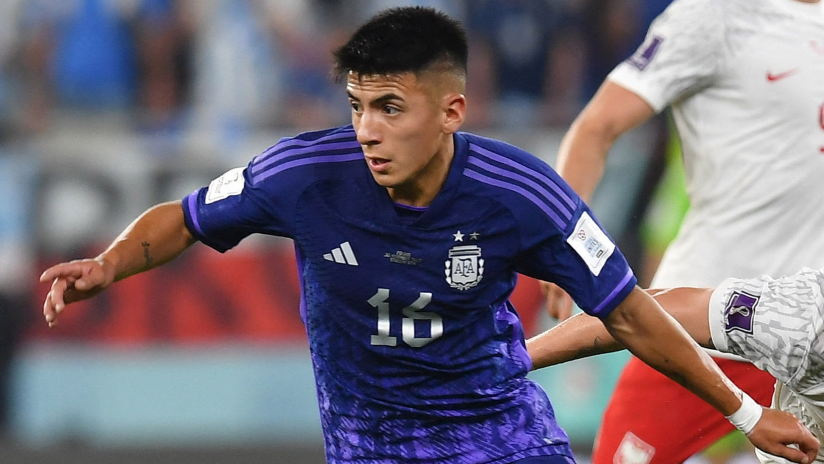Argentina are not just the best team in the world today, but they’re arguably the deepest.
Take the left wing spot in their 4-3-3, for instance. Angel Di Maria started the Copa America out there and he put in a Golden Ball (MVP) type performance in the opener, only to succumb to injury. No problem. That’s because waiting in reserve is Nicolas Gaitan, the recent Atletico Madrid purchase, who earned plenty of plaudits for his tidy passing and cleverness on the ball.
Now Gaitan is suspended for the semifinal vs. the USA and in comes Ezequiel "El Pocho" Lavezzi, the Italian Serie A veteran and rumored MLS target who plies his trade in China these days. He brings plenty of experience, explosiveness and verticality to the Argentine attack down that left flank with his runs in behind the defense. It’s a skill set that, according to reports in the lead-up, will keep Tottenham Hotspur youngster Erik Lamela on the bench — a player Argentine boss Tata Martino sees as more midfielder than winger.
It’s an embarrassment of riches available at the disposal of the two-time World Cup champs and 14-time Copa America winners. But it’s concentrated mainly in the attacking areas of the field. They’re vulnerable in the back:
GOALKEEPER
Sergio Romero (Manchester United) has had a decent showing so far in the Copa America, highlighted by a penalty kick save (it was really a “catch”) against Venezuela. No glaring mistakes, except for his role in causing the penalty kick he faced in the quarterfinals. He’s come up with a couple of timely saves (he's needed to make just 12 total in four matches), but overall hasn’t been tested much.
DEFENDERS
The back four, from left to right, consists of Marcos Rojo (Manchester United), Ramiro Funes-Mori (Everton), Nicolas Otamendi (Manchester City) and Gabriel Mercado (River Plate). They’re tough guys who aren’t bashful to apply a crunching tackle when necessary. Their zeal to defend means they overcommit at times and that aggression masks what is average speed.
The two outside backs, Rojo and Mercado, are rarely a threat in attack with Rojo exhibiting slightly more of a penchant to push forward. Then again, when you have the attack Argentina do (see below), who needs defenders contributing on offense?
MIDFIELDERS
When it comes to 5-foot-9 busybodies, who are smart in possession and feisty when defending, Argentina has the market cornered.
Javier Mascherano (Barcelona) plays right in front of the backline with Augusto Fernandez (Atletico Madrid) and Ever Banega (Inter) on either side of him. Of the latter two, Banega is the more attack-minded, while Fernandez is typically the one dropping to help Mascherano when needed. The Fernandez-Messi connection has worked out well, which is one reason Fernandez has kept his spot over Lucas Biglia (Lazio).
FORWARDS
This is the area of the field that makes Argentina world-class. Gonzalo Higuain (Napoli), an old-school finisher, is there to finish off the runs and final passes from Lionel Messi (Barcelona) and Lavezzi.
While Lavezzi is best when he's running at defenders from out wide, the more elusive Messi will be given free reign to roam and find pockets. It's the kind of freedom you afford a player who can do damage from anywhere on the field with his rapid accelerations, passing and dribbling skills which have brought countless defenses to their knees. More of a facilitator over the last year, he can go quiet for most of a match before finding the game-breaking play.
BENCH
With Di Maria and Javier Pastore (Paris St. Germain) training separately from the rest of the team in recent days, expect them to come on the field only in a dire situation. Sergio Aguero (Manchester City) will typically relieve Higuain if he's run himself into the ground or it just isn't his day under goal.
Biglia is the one who'll come on to freshen up the legs in midfield when it's time to see out the result. Matias Kranevitter (Atletico Madrid) will be the choice if the Argentines are losing the midfield battle and need a dose of energy and dynamism to gain the upper hand.













